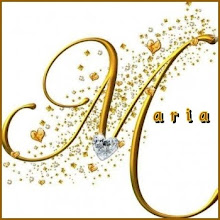PLEASE CLICK ON THE POST TITLE
WILL TAKE YOU DIRECTLY TO ONE OF THE (SOURCES)
WILL TAKE YOU DIRECTLY TO ONE OF THE (SOURCES)

For centuries, when the issue of a fight depended not only on the personal ability of the fighter, but also on another decisive factor - the perfection of his weapon - with Toledos exceptional steel were forged the most terrible arms in the world. Their extraordinary hardness made of each of these swords an invincible force in the hands of an expert swordsman. All European armies knew the superior quality of Toledo s steel and many great warriors relied only on sabers of Toledan provenance.
Their origin comes from the most ancient Spanish customs. More than 2,000 years ago, in the 5th century B.C. , Iberian blacksmiths already forged swords known as falcata which had an iron blade inside and a special design made to increase the bluntness of the slash.
Due to their fame, these swords were choosen by Hannibal for his army and the Roman legions, defeated by those weapons, adopted them later and supplied their centurions with the dread Toledan blades.

The times of Excalibur kind of sword passed by. The Middle Ages blacksmiths exalted the office, as they relied more and more on technological progress and not only on the good quality of their steel. The Muslim armies feared the sword that had defeated them. They didn't revere only the hand of a Master - the Cid Campeador - but also the excellence of his weapon, a Toledan sword, of course! The Muslims adopted such a technics to produce their slender two-edged scimitars, transmitting their secret from one generation to the other. Then, the Toledan manufacturers would yield the famous rapiers so well popularized through d'Artagnan and his fellow Musketeers.


One example of what was once the most noble art in the world is no doubt the gold inlaid hunting dagger of King Charles the Fourth, with the mark and the name of the smith who did it engraved on it. Toledan craftsmen can be rightfully proud of such a fine blade and splendid finish. This art is actually disappearing because swords have been replaced by another type of weapon, like pistols, guns, rifles.
The internal structure of the blade and the mystery of its fabrication were a secret well kept by the manufacturers. It hasn't been unraveled until the 20th century! To make such an exceptional weapon, they had to forge at the same time and at a very hot temperature hard steel with high contents of carbon and soft steel. This way, they could obtain excellent mechanical properties as well as a better fastness to wear.

(Brave Heart Sword)
An appropriate selection of raw materials, their adequate proportion in the blade and the forging of both types of steel at a temperature of 1454 º F during the exact interval of time required, give the most perfect sword ever built in the world.
In old ages, the blacksmiths used to recite psalms and prayers keeping always the same rhythm, in order to calculate the time that the blade would remain inside the furnace. This timing had to be respected to avoid any deviance: a longer time would melt the steel too much and on the contrary, a shorter one wouldn't let the metal reach its melting-point.

(Excalibur Sword)
Forging requires forcefulness and efficiency in a very short time. Then comes the following step: cooling with water or - sometimes - with oil, to get a clear and clean welded seam. In some cases, the blacksmith had to blow even 20,000 times in order to get a perfect tempering, but such a level of perfection wouldn't allow him to make more than 2 or 3 blades in a year!
In other parts of the world, craftsmen have tried to imitate the perfection of Toledos steel, but they all failed. Damascus steel was too hard, not at all flexible, because it contained only iron and carbon and wasn't refined of all the mineral impure elements.Swedish steel was based on a soft steel, carbureted in a furnace, surrounded by animal horns and hair, leaves, etc. and heated at a temperature of about 1650º F. Swords were also manufactured in Solingen (Germany). There, they twisted together wires of different thickness and carbon contents in order to get a threadlike structure that combined hard and soft steel. the swords of Nimes (France) were also recognized for their good quality.

(Musketeers Sword)
But everywhere there were forgeries as the fame of Toledan swords was unique in the world. If you could convince the buyer that the sword you were trying to sell him was an authentic Toledan sword that came all the way from the world capital of steel forging, you had done a really good deal. But of course, you had better disappeared before he tried it! At use, nothing could equal Toledan steel.
Video from Toledo Spain
Other Sources:


No comments:
Post a Comment